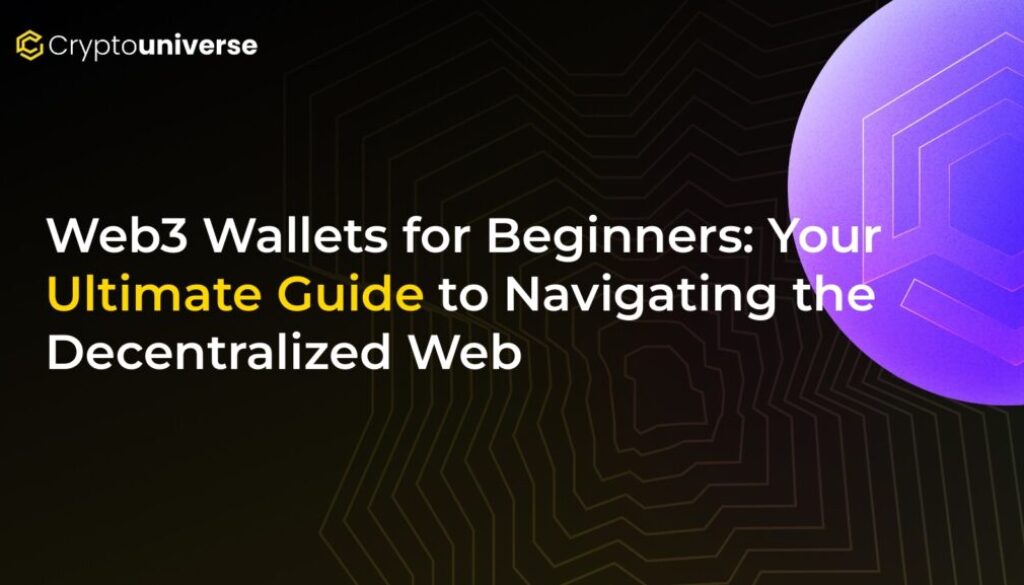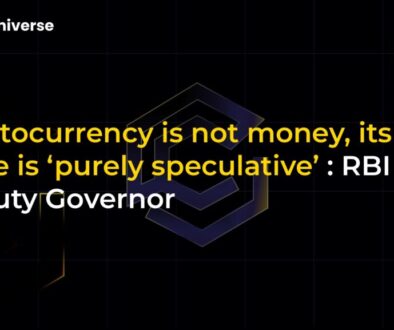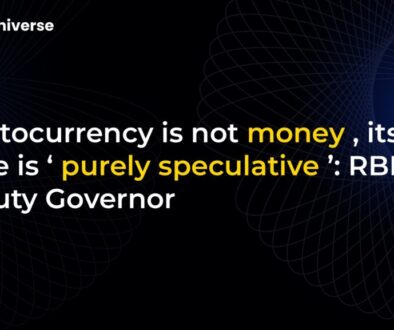Web3 Wallets for Beginners: Your Ultimate Guide to Navigating the Decentralized Web

Web3 Wallets for Beginners: Your to Navigating the Decentralized Web
The world of cryptocurrency has evolved far beyond simply buying and holding assets like Bitcoin. Today, users want to dive into a vibrant ecosystem of decentralized finance (DeFi), trade on DEXs, collect NFTs, and engage with the next generation of the internet. To do any of this, you need one essential tool: a Web3 wallet.
But with countless options flooding the market, choosing the right one can feel overwhelming for a newcomer. What’s the difference between a crypto wallet and a Web3 wallet? Which type is the most secure? How do you even get started?
This guide will answer all those questions and more. We’ll break down everything you need to know about Web3 wallets, from what they are to how to choose the perfect one for your journey into the decentralized web.
What Exactly is a Web3 Wallet?
Think of a Web3 wallet as your digital passport and keychain for the decentralized internet. It’s a software application or hardware device that manages your public and private keys, which are the cryptographic credentials you need to interact with blockchains.
Here’s a crucial point: your wallet doesn’t actually store your crypto. Your coins and tokens always exist on the blockchain. Your wallet simply holds the keys that prove you own those assets and give you the ability to access and manage them.
Crypto Wallet vs. Web3 Wallet: What’s the Difference?
You might be thinking, “That sounds just like a regular crypto wallet.” You’re not wrong. All Web3 wallets are crypto wallets, but not all crypto wallets are Web3 wallets.
The key difference is functionality. While a basic crypto wallet might only let you send, receive, and store cryptocurrency, a Web3 wallet is your gateway to the entire decentralized ecosystem. It allows you to:
- Connect to dApps: Interact with decentralized applications for gaming, social media, and more.
- Engage with DeFi: Trade on decentralized exchanges (DEXs), lend your assets to earn interest, or borrow funds.
- Manage NFTs: Mint, buy, sell, and display your non-fungible tokens.
- Act as your Digital Identity: Instead of creating a new username and password for every site, you can simply connect your wallet to log in.
Types of Web3 Wallets: Finding Your Fit
Web3 wallets generally fall into two main categories: hot wallets and cold wallets. Understanding the difference is key to managing your assets securely.
1. Hot Wallets (Software Wallets)
Hot wallets are software-based and are always connected to the internet. They are known for their convenience and ease of use, making them ideal for frequent transactions and interacting with dApps.
- Browser Extensions: These live in your web browser (like Chrome or Firefox) and allow for seamless connection to dApps. Examples include MetaMask and Phantom.
- Mobile Apps: These wallets run on your smartphone, allowing you to manage your assets on the go. Examples include Trust Wallet and Coinbase Wallet.
Pros: Highly convenient, free to use, and excellent for beginners.
Cons: Being online makes them more susceptible to hacking and phishing attacks.
2. Cold Wallets (Hardware Wallets)
Cold wallets are physical devices that store your private keys offline. To authorize a transaction, you must physically connect the device to your computer and approve it. This air-gap provides a massive security advantage.
Pros: The highest level of security for your digital assets, ideal for long-term holding.
Cons: They cost money to purchase and are less convenient for quick, daily transactions.
How to Choose the Best Web3 Wallet for You
When selecting a wallet, you need to balance security, functionality, and ease of use. Here are the key factors to consider:
Security Features
Security is non-negotiable. Look for wallets that have been independently audited by reputable firms like Certik or Trail of Bits. Also, consider the recovery method. While the traditional 12 or 24-word seed phrase is common, newer wallets are introducing more user-friendly options like multi-party computation (MPC) and social recovery, which can prevent a total loss of funds if you lose your phrase.
Blockchain & Token Support
The crypto world isn’t limited to one blockchain. There’s Ethereum, Solana, Polygon, Avalanche, and many more. A multi-chain wallet will allow you to manage assets across different networks from a single interface. Before committing to a wallet, ensure it supports the specific blockchains and tokens you plan to use.
User Experience (UX)
Especially for beginners, a complicated wallet can be a major roadblock. Look for a wallet with a clean, intuitive interface. Great features to look for include a built-in token swap, an NFT gallery to view your collectibles, and clear educational resources to guide you through the process.
Self-Custody
The core principle of Web3 is ownership. A self-custodial (or non-custodial) wallet gives you—and only you—control over your private keys and, therefore, your funds. This embodies the famous crypto mantra: “Not your keys, not your crypto.” For the true Web3 experience, always opt for a self-custodial wallet.
Getting Started: Your First 5 Steps with a Web3 Wallet
Ready to jump in? Here’s a simple, step-by-step guide to setting up your first Web3 wallet.
- Choose Your Wallet: For beginners, a browser extension like MetaMask is a great starting point due to its widespread support.
- Download Securely: Go directly to the wallet’s official website to download the extension. Never use a link from an unverified source.
- Create Your Wallet & Secure Your Recovery Phrase: During setup, you’ll be given a secret recovery phrase (seed phrase). Write this down on a piece of paper and store it in a secure, offline location. This is the master key to your funds; never share it with anyone or store it digitally.
- Fund Your Wallet: You’ll need some crypto to pay for transaction fees (known as “gas”). You can buy crypto on a centralized exchange like Coinbase or Binance and then transfer it to your new Web3 wallet address.
- Connect to a dApp: Visit a dApp, like a decentralized exchange (e.g., Uniswap) or an NFT marketplace (e.g., OpenSea). Click the “Connect Wallet” button and approve the connection in your wallet extension. That’s it—you’re now interacting with Web3!
Conclusion: Your Journey into Web3 Starts Now
A Web3 wallet is more than just a place to hold crypto; it’s your key to unlocking a new digital world. It gives you control over your assets, protects your identity, and provides access to a universe of innovation. By prioritizing security and choosing a wallet that fits your needs, you can confidently take your first steps into the exciting and empowering landscape of the decentralized web.


